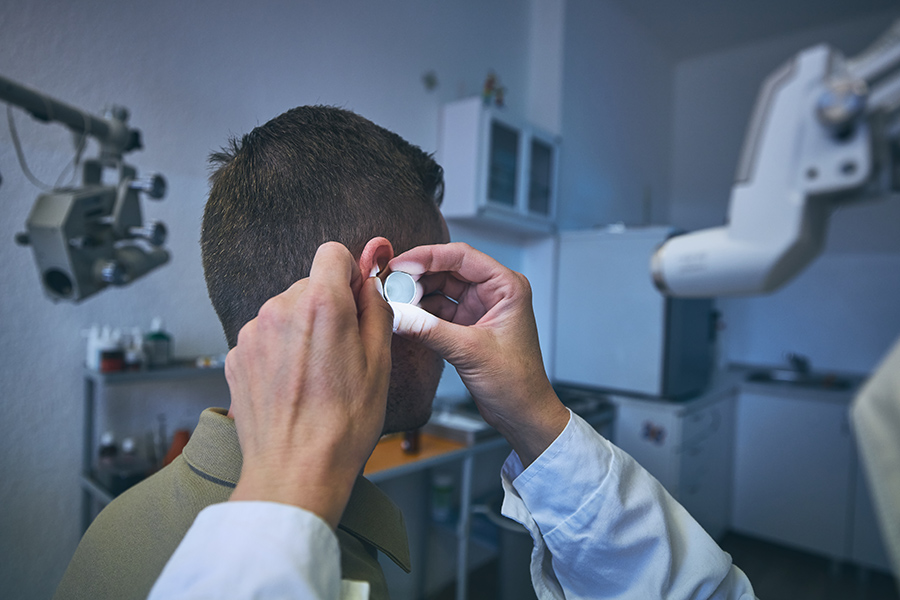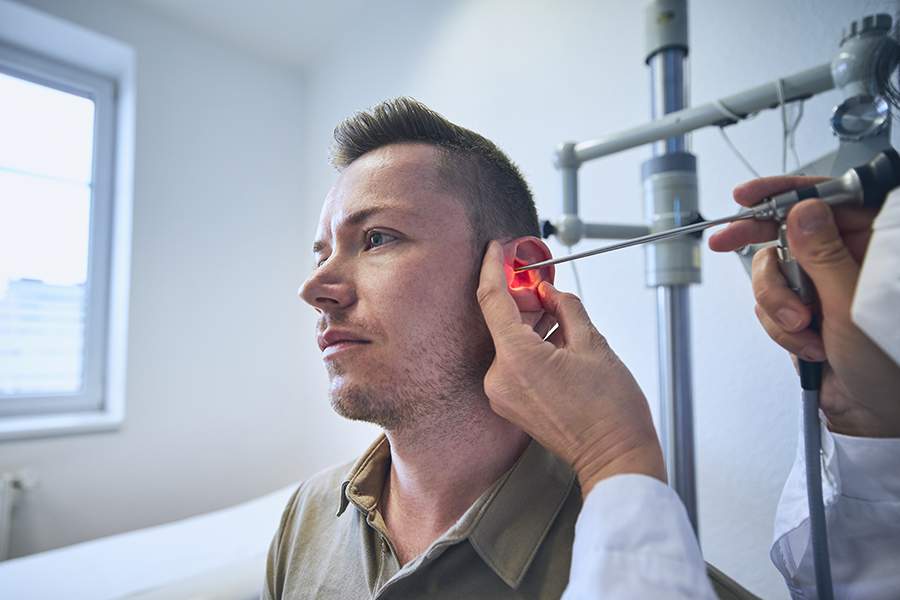Introduction
In today’s digital era, smartphone Free Hearing Test apps are revolutionizing how we manage and understand our health. Among these advancements are hearing test apps that offer a convenient and user-friendly tool for assessing auditory capabilities. These apps have gained popularity and are available on both iPhone and Android platforms. In this review, we will evaluate leading free hearing test apps based on factors such as ease of use, accuracy, additional features, and user reviews.
QUIZ - SYMPTOMS OF HEARING LOSS IN CHILDREN
Mimi Hearing Test (iOS and Android)
Mimi Hearing Test stands out for its integration with Apple Health and its sleek and user-friendly interface. The app provides a comprehensive hearing test that yields a “hearing age” score, simplifying the understanding of one’s hearing capabilities. However, some users have reported that the test may be overly sensitive to background noise.
uHear (iOS and Android)
uHear offers three types of tests: a hearing sensitivity test, a speech in noise test, and a questionnaire about daily hearing situations. Together, these tests provide a well-rounded evaluation of one’s hearing. However, some users have noted that the instructions could be clearer, particularly for individuals who are not tech-savvy.
HearWHO (Android) Developed by the World Health Organization,
HearWHO allows users to regularly check their hearing and track changes over time. The app is praised for its simplicity and the credibility of its parent organization. However, it offers fewer features compared to some of its competitors.
Phonak Leo
Interactive Stories (iOS) Primarily designed for children, Phonak Leo uses interactive stories to assess hearing abilities, making the test more engaging for young users. While colorful and fun, it may not provide the level of detail required for adults seeking a comprehensive hearing analysis.
Decibel X (iOS and Android)
Decibel X is not specifically a hearing test app but rather a noise meter that helps users identify potentially harmful noise levels in their surroundings, serving as a preventative tool. It is highly accurate and of professional-grade quality, but it does not offer personalized hearing tests.
IncenSonic OTC Hearing Aids for Seniors and Adults
Introducing the revolutionary IncenSonic OTC Hearing Aids for Seniors and Adults. Experience the power of advanced technology combined with sleek, discreet design, all aimed at enhancing your hearing experience.
With the Receiver In Canal (RIC) technology, these professional-grade hearing aids deliver clear and full sound directly into your ear canal. Say goodbye to the frustrations of muffled sounds and enjoy the richness of 16-channel sound processing.
Our IncenSonic R20D1 OTC hearing aids offer all-day comfort and discretion. Their lightweight and behind-the-ear design ensure a comfortable fit that is barely visible to others. You can confidently wear them throughout the day without any discomfort.
No more hassle of buying batteries or frequent recharging. With the rechargeable feature, simply charge the hearing aids for 1 hour and enjoy up to 20 hours of continuous use. Say goodbye to the inconvenience of constant battery changes or daily recharging.
Experience the ultimate in noise and whistling cancellation. Our digital signal processing, combined with our unique hearing compensation algorithm, effectively reduces feedback noise, allowing you to focus on what truly matters – the sounds that surround you.
We are confident in the quality and performance of our IncenSonic OTC Hearing Aids. That’s why we offer a 100% satisfaction guarantee. If you’re not completely satisfied within the first 45 days, simply return them for a full refund. Your satisfaction and improved hearing experience are our top priorities.
Invest in your hearing and regain the joy of clear and amplified sound with IncenSonic OTC Hearing Aids for Seniors and Adults. Experience the perfect blend of cutting-edge technology, comfort, and satisfaction. Don’t let hearing loss hold you back any longer – take control of your hearing and enjoy life to the fullest.
A Comparison of the Free Hearing Test Apps
| App Name | Platforms | Key Features | Pros | Cons |
|---|---|---|---|---|
| Mimi Hearing Test | iOS, Android | Hearing age score, Apple Health integration | Sleek interface, Comprehensive test | Sensitive to background noise |
| uHear | iOS, Android | Hearing sensitivity test, Speech in noise test, Daily hearing situation questionnaire | Rounded hearing evaluation | Instructions could be clearer |
| HearWHO | Android | Regular hearing check, Hearing tracking | Simple to use, Credible source (WHO) | Limited features |
| Phonak Leo – Interactive Stories | iOS | Interactive story-based hearing tests | Engaging for children | Not detailed enough for adults |
| Decibel X | iOS, Android | Environmental noise level meter | Accurate, Professional-grade | Not a personalized hearing test |
Summary of the Free Hearing Test Apps
- Mimi Hearing Test: Provides a “hearing age” score for a simplified understanding of hearing capabilities. It has a sleek and user-friendly interface, but it may be overly sensitive to background noise.
- uHear: Offers a hearing sensitivity test, a speech in noise test, and a questionnaire on daily hearing situations for a comprehensive evaluation. However, the instructions could be clearer for less tech-savvy individuals.
- HearWHO: Allows regular hearing checks and tracking over time. It is simple to use and backed by the World Health Organization but lacks some features compared to other apps.
- Phonak Leo – Interactive Stories: Engages children through interactive story-based hearing tests but may not provide sufficient detail for adults seeking a comprehensive analysis.
- Decibel X: Functions as a noise meter to identify harmful noise levels in the environment. It is accurate and of professional-grade quality but does not offer personalized hearing tests.
Each app has its strengths and weaknesses, so the best choice depends on individual needs and expectations.

Navigating Pulsatile Tinnitus in Seniors: Insights and Effective Management
Navigating pulsatile tinnitus in seniors requires a tailored approach that considers both insights and effective management strategies. As individuals age, their auditory health may become more complex, necessitating specialized care.

Navigating Pulsatile Tinnitus in Adults: Insights and Treatment Strategies
Navigating pulsatile tinnitus in adults requires a nuanced approach that combines insights and treatment strategies. From understanding the underlying causes to exploring effective
Can I create a personal profile using the App?
Typically, hearing aids are programmed by audiologists or hearing healthcare professionals using specialized software and equipment during in-person appointments. This process ensures accurate adjustments based on an individual’s specific hearing loss profile and personal listening needs.
Mimi Hearing Test allows users to create a personal hearing profile, which could potentially be used as a reference when programming hearing aids. However, it is important to note that this should not replace a professional hearing test. Some modern hearing aids also offer user adjustments through their own apps, allowing wearers to fine-tune settings within the parameters set by their audiologist.
Hearing aid programming is a complex process that takes into account not only the pure-tone audiogram but also subjective experiences, preferences, the type and configuration of hearing loss, speech comprehension abilities, and more. Multiple appointments for adjustments are often necessary to ensure optimal functioning of the hearing aids.
However, ongoing technological advancements may lead to the development of apps capable of directly programming hearing aids in the future. For the latest information, it is advisable to check for updates or consult with a healthcare professional.
Conclusion
Free hearing test apps are valuable tools for regularly monitoring hearing health, particularly for those without immediate access to audiology services. While they provide a useful initial assessment, they should not replace a comprehensive evaluation by a hearing professional if there are concerns about hearing health.
Remember, these apps work best in quiet environments and with high-quality headphones. Results can be influenced by headphone quality and ambient noise levels during the test. If you suspect hearing loss, always consult a healthcare professional.






